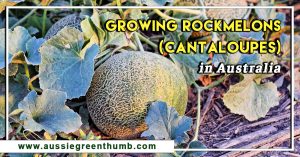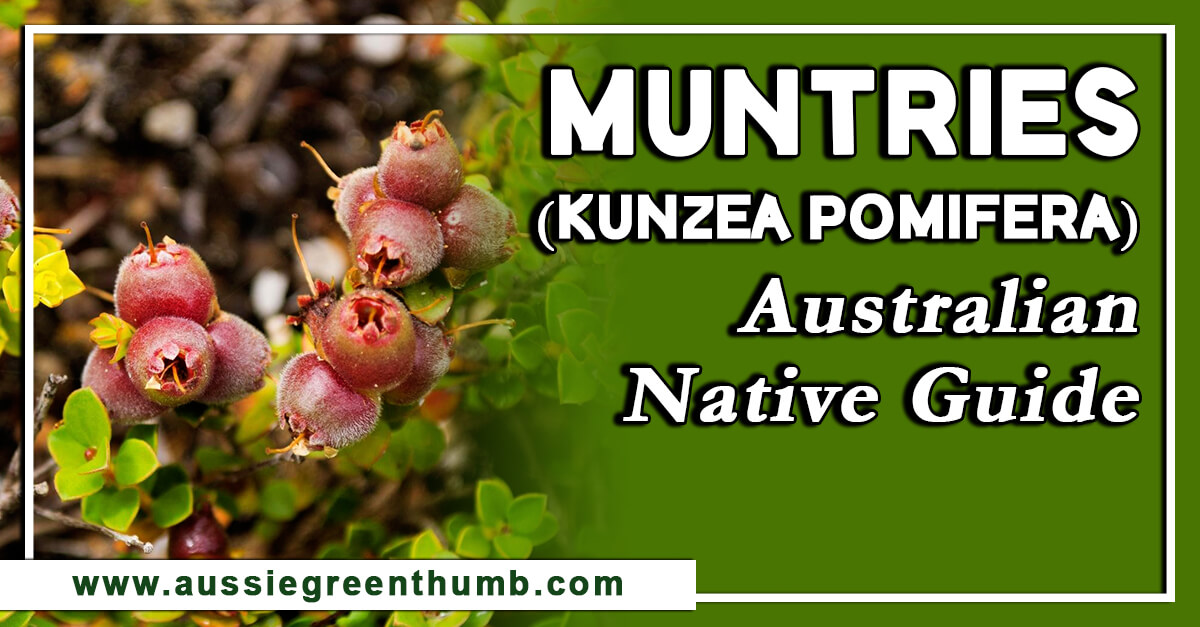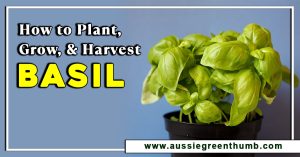Making Weeping Bottlebrush tea using the leaves and blossoms is one of my great botanical discoveries. I think I even prefer it to a cup of coffee. You just add a bit of honey for sweetness and then you have the perfect cup of happiness.
In our Callistemon viminalis guide, we’ll go through some of the popular cultivars and what makes them a good choice, a care guide for your plant from sunlight needs to fertiliser, and some advice regarding pests and diseases.
More...
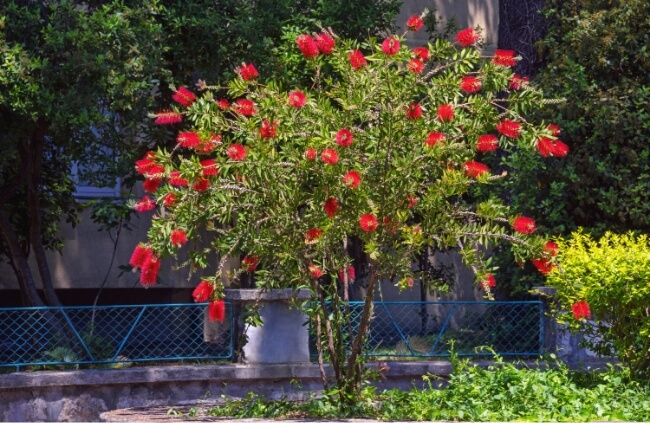
Family: | Myrtaceae |
|---|---|
Genus: | Callistemon |
Species: | C. viminalis |
Common Names: | Weeping Bottlebrush, Red Bottlebrush, Drooping Bottlebrush |
Origin: | Australia |
Location: | Indoor and outdoor |
Type: | Tree, shrub |
Growth: | Up to 9 metres tall and 4 metres wide |
Sun requirements: | Full sun |
Foliage Colour: | Green |
Flower Colour: | Red |
Flowering: | Spring to autumn |
Edible Parts: | Leaves and flowers |
Maintenance level: | Low |
Poisonous for pets: | Non-toxic to cats and dogs |
Introduction to Callistemon viminalis
Callistemon viminalis is planted generously across Australia and in other parts of the world. It earned popularity for being hardy and able to adapt to different conditions with ease. The nectar of the Weeping Bottlebrush is loved by various birds and animals, which is an added benefit for those wanting to attract nature’s visitors to their garden.
Using Callistemon viminalis to control erosion is another reason this native plant is valuable. Weeping Bottlebrush is often planted along river banks to withstand strong currents and flooding. Their root system helps to bind soil and therefore reinforce the water banks.
Weeping Bottlebrush Plant Features
This shrub or small tree has dark grey bark, with evergreen leaves and spiky red flowers with long bristles that arrive in spring and continue into autumn. In the place of flowers, you will find a wooden seed pod.
It’s possible for Callistemon viminalis to reach a height of up to 9 metres in the wild but it can be kept smaller for home garden purposes. You might have seen it often planted as a street tree too.
Callistemon viminalis Cultivars

Callistemon ‘Captain Cook’
This is a dwarf cultivar that remains compact in shape and grows up to 2 metres in height. It’s known to produce plenty of flowers and to flower for a long time. This cultivar used to be called Compacta and became Captain Cook in celebration of the 1970 bicentennial of James Cook’s Australian voyage.
Callistemon ‘Rose Opal’
This dwarf cultivar is a bushy and upright shrub, growing to between 1.5 and 1.8 metres in height. The flowers are a rose red colour and seem to shimmer, hence the name.
The leaves are a dark green colour and the branches of the shrub arch slightly. It would do well in a small garden to create a hedge or even as a feature plant.
Callistemon ‘Dawson River Weeper’
This cultivar grows quickly and has a round shape. In terms of size, it’s usually about 5 metres in height and width. The flowers are bright red with a yellow tip and the tree has long branches with soft leaves that are either grey or green in colour and covered with long and silky hairs.
It usually flowers in spring and summer but sometimes there is a flower or two the whole year round.
Callistemon ‘Hannah Ray’
This cultivar grows to about 4 metres in height and 2 metres in width. The flowers are bright red and it has long weeping branches similar to the Dawson River Weeper cultivar with soft leaves.
It’s definitely a favourite for the generous amount of bright flowers that arrive in spring and the new leaf growth that appears with pink tips.
Callistemon ‘Prolific’
This cultivar grows quickly to a height of around 6 metres and 4 metres in width. It produces an abundance of red flowers during the springtime and will surprise you with some flowers throughout the year too.


Get Your Free Guide:
Master Growing Australian Natives eBook
A Must Have Complete Guide for Every Australian Garden
Get Your Free Guide:
Master Growing Australian Natives eBook
A Must Have Complete Guide for Every Australian Garden
It has dark green leaves and weeping branches, working well as a hedge or wind breaker in a coastal garden for example. The tree does well in a variety of soils, even poor quality ones.
Callistemon ‘Wild River’
This cultivar originated in northern Queensland and produces a medium sized tree that is around 4 metres high and 2 metres wide. It produces bright red flowers during spring and autumn and has a slight weeping shape.
The tree can handle waterlogged ground, and also frost and drought once it’s matured.
How to Grow Callistemon viminalis
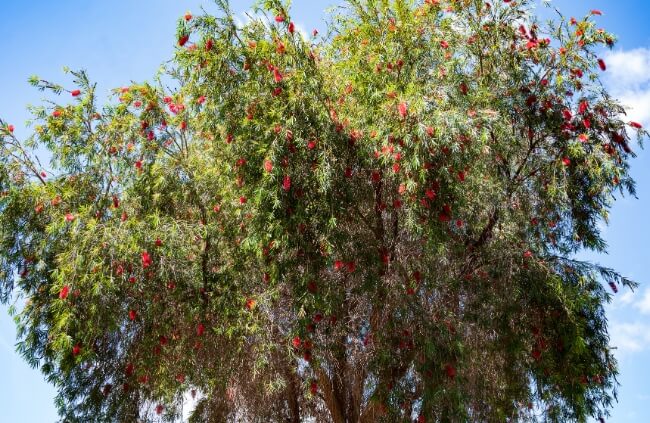
Considering the natural habitat of the Weeping Bottlebrush, we know that this plant needs a good supply of water during the early years. When it becomes more mature, it can handle drought if necessary but heavy frost can cause damage.
The Weeping Bottlebrush needs full sun and doesn’t do well in shade. If it only gets partial sun, it won’t produce as many flowers. Make sure to provide your Weeping Bottlebrush with well-draining soil.
You don’t want it to be soggy otherwise you could end up with root rot. Loose and sandy soil is ideal for the root system and aim for a slightly acidic to neutral pH. If your leaves turn yellow, it could be that the soil is too alkaline.
Propagating Callistemon viminalis
Callistemon viminalis Propagation for Cuttings
It’s quite easy to propagate Weeping Bottlebrush from cuttings. The wood should be partially matured and the best time to take the cuttings is in summer. Make sure your scissors or cutting tool is sharp enough and clean.
Each cutting should be around 15cm and you can remove the leaves on the lower end and any flower buds. Dip your cuttings in rooting hormone and tap off any excess powder.
Once you have filled your chosen containers with potting soil, water them so that the mixture is moist and you can then plant the cuttings. Put a plastic bag over each cutting and tie it with a rubber band. This helps to lock in moisture.
We recommend checking the soil each day to ensure it stays moist and you can top up with water if needed. Callistemon viminalis cuttings take around 10 weeks to root.
You can check the cuttings for resistance with a gentle tug and this will indicate that the cuttings have roots. You can now take off the plastic bag and let the cuttings adjust to the difference in humidity. After this process, the cuttings can then be transplanted into their permanent home.
Propagating Weeping Bottlebrush by Seeds
You can also grow Callistemon viminalis using seed, although it does take a bit longer to root than a cutting. Aim to plant your seeds at the beginning of spring.
Fill your selected pots with potting soil and water it until moist. Plant your seeds and cover them lightly. Make sure that the potting mix stays moist and place the pots somewhere that has bright but indirect light. Germination usually takes between 6 and 8 weeks.
When the seedlings have grown a few centimetres in height, you can thin them out or separate them and plant in individual pots.
Weeping Bottlebrush Care Tips
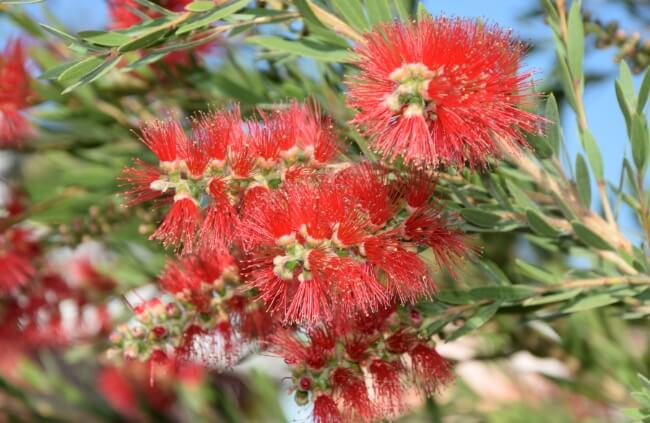
Watering Weeping Bottlebrush
Provide your Weeping Bottlebrush with water often to keep it healthy. Once the plant is established, it will cope with a drought but ultimately will always flourish with watering.
As a guideline you can water when the soil feels dry a few centimetres below the top.
What Fertiliser to Use
You can feed your Weeping Bottlebrush during its growing season using a well-balanced fertiliser. This will keep it healthy and ensure that it produces flowers. You can apply a dose of fertiliser at the start of each season from spring until autumn.
Pruning
Pruning a Weeping Bottlebrush is essential to help keep it neat and in shape. Regular pruning encourages good growth and it’s also important to prune after flowering, cutting directly underneath the flower.
Common Callistemon viminalis Pests and diseases
Leaf Spot
This is a fungal disease that causes spots on the leaves which start off small and then increase in size. The spots are brown with a yellow border. Get rid of any infected leaves, including any that have fallen off the tree and then spray your tree with a liquid copper fungicide.
Overwatering can be the cause of this fungus so be sure to maintain soil that is moist and not soggy.
Powdery mildew
This disease also happens when you are giving the plant too much water and particularly if the leaves get wet during watering. Always try to water from below and not above the plant.
Overhead watering means water will collect on the leaves and it’s in this water that the disease can breed. This includes rainwater that collects on the leaves. Your tree won’t die from the disease but it will struggle to bloom and will look unhealthy.
There is usually a type of white powder found on the leaves and you might find that the leaves are off colour or become yellow, and that the tree starts to lose leaves. It’s important to keep your Callistemon viminalis dry and make sure it gets enough sun.
Also allow for good circulation and avoid surrounding it with other plants. You can treat the fungus with a suitable fungicide.
Root rot
Root rot usually happens when there is too much water in the soil. Weeping Bottlebrush needs a soil that is well-draining to make sure the soil doesn’t remain wet. Signs of root rot include yellow leaves, falling leaves, and branches showing die back. The tree trunk might also change colour and the roots become a red to brown colour.
This disease can be hard to treat so try and maintain optimal conditions to avoid it. Be sure not to overwater. The fungus can attack the roots of your Weeping Bottlebrush and other plants nearby.
In severe cases, it can kill the plant. You can treat affected parts of your Callistemon viminalis with a suitable fungicide.
Twig Gall
This fungal disease likes conditions that are warm and moist which help the disease to spread. You might notice that your tree starts to sprout more growth than normal. The branches also start to become bulky.
When these symptoms get worse, they can cause great damage to your Weeping Bottlebrush. Do your best to ensure that soil doesn’t become waterlogged and cut off any branches that are affected. This should help to contain the spread of the disease.
Callistemon viminalis Frequently Asked Questions

What plant family does Callistemon viminalis belong to?
Weeping Bottlebrush is part of the myrtle plant family and they are all woody plants. Other plants belonging to this family that are commonly known are the bay rum tree, guava, and eucalyptus.
What is the distribution of the Weeping Bottlebrush in Australia?
You will find this tree mainly in the north-eastern parts of New South Wales, Eastern Queensland, and Western Australia, specifically the Kimberley region.
What is the conservation status of Weeping Bottlebrush?
At present, this plant is not considered to be at risk in the wild.
What is the meaning of the botanical name Callistemon viminalis?
Callistemon comes from the Greek word “kalos” which means beautiful, and “stemon” which means stamens. Viminalis is Latin and means “with long, flexible twigs”.
What are the medical uses of the Weeping Bottlebrush?
Callistemon viminalis has many medicinal uses. It has antibacterial and antifungal properties. It can be used as a cough suppressant, to assist with urinary tract infections, and it helps in the formation of bone and cartilage.
In Jamaica, Weeping Bottlebrush is used to make a tea for treating gastrointestinal problems and skin infections and Native Australians have used it as an energy drink.
What are some of the benefits of the Weeping Bottlebrush?
For those wanting to attract nature’s visitors to their garden, the bright red flowers with their sweet nectar often attract butterflies and hummingbirds. The crushed leaves of the plant can help to repel insects and fresh leaves can be used to keep bugs away from bedding and clothing.
The leaves and flowers of the Weeping Bottlebrush can be used to make teas, jams, and syrups and to season stews, soups, and meat.
What is the lifespan of Callistemon viminalis?
This is a hardy plant that can live between 20 and 40 years if given the proper care.
Is Melaleuca viminalis the same as Callistemon viminalis?
Yes it is. In Australia, Melaleuca viminalis is known as a synonym of Callistemon viminalis. These started off as two closely related plant groups, namely Callistemon and Melaleuca. In more recent years, they have merged under one name.
In many instances, Callistemon species are now referred to as Melaleuca. Botanists agree that the differences between the two groups are so small, that they should rather be combined.
Sign up for our newsletter to receive more gardening tips, advice, and inspiration.
Wrapping Up Our Callistemon viminalis Growing Guide
The dwarf cultivars of Callistemon viminalis are wonderful to create a border around your garden or flower beds and also along your pool area. If your garden needs more privacy, this plant makes a beautifully natural screen, and if you’re looking to create more shade, the taller cultivars are ideal for this purpose.
Published on October 20, 2023 by Nathan Schwartz
Last Updated on September 19, 2024

